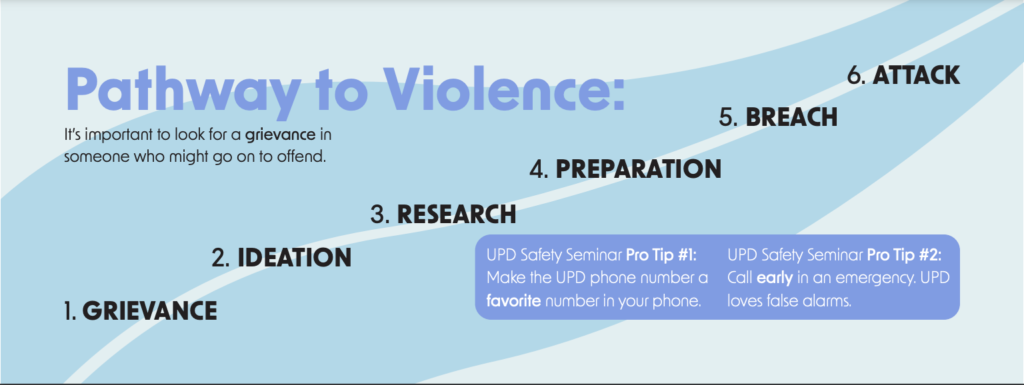WILL KARR
Editor in Chief

University Police Chief Brent Isaacson is working to show that being an officer is about more than just responding to crimes — it’s about working to actively prevent them from happening in the first place.
On Wednesday, Feb. 22 at 2:30 p.m. in the Kelly Auditorium of the Science Center, University Police held a safety seminar which was hosted by Isaacson. Overall, the seminar focused on the question, “What can the campus community do to take care of each other?”
University Police is a fully authorized NYS Police Agency with 23 uniformed officers, one investigator and three dispatchers who provide 24/7 service. All officers are trained in active shooter response.
Isaacson has been at SUNY Fredonia for about four years; he first came to Fredonia in July 2019. Before coming to Fredonia, he worked at the Federal Bureau of Investigation (FBI) for 23 years, where he focused on crime and violence prevention.
The seminar highlighted fictional and real instances of how individuals behave before they are about to do something violent, providing attendees with a retrospective view of behaviors that were seen before individuals committed crimes, which he describes as “behavioral leakage.”
“We have to know what we are looking for before we can report it,” Isaacson said. “… Howlers don’t hunt, they howl. Similarly, violent offenders often don’t just snap, they plan. In the process of planning, they often exhibit behaviors. We can often identify the danger before it occurs.”
Isasscon explained how offenders often leave “legacy tokens” behind as a way to communicate what they have done. Isaacson went on to say, “Although active shooter incidents are horrible, the incidents are rare.”
Isaacson provided the audience with statistics about violent offenders. Of offender characteristics, almost all acted alone: 94% were male and ages ranged from 16 to 62 years old.
Although there are common characteristics, Isaacson stressed that we should be identifying odd and contextually inappropriate behaviors, rather than the appearance or identity characteristics of an individual. First, Isaacson mentioned that it’s important to look for a grievance in someone who might go on to offend. He describes this as the first step in the “pathway to violence.”
Pathway to Violence:
- Grievance: What is the person upset about? Doesn’t have to be real, it just has to be real to the person that committed the crime.
- Ideation: An individual begins to believe that violence is the answer to the problem after a wound to their ego. A person can’t get over the grievance. They become a “grievance collector.”
- Research: An individual starts looking at examples of past offenders. An individual starts doing things out of context and the ordinary.
- Preparation: They come up with their own plan
- Breach
- Attack

“People see behaviors, but don’t always report them. But when people report, the people
often don’t go on to offend,” Isaacson said. “Very few attackers issue direct threats to the individual or institution prior to attack.”
Isaacson encouraged individuals to trust their intuition, report their concerns and seek professional help if they think something is out of the ordinary. He mentioned how SUNY Fredonia has a Students of Concern Team, where individuals on campus can report any concerns that they have regarding a given student. The student will not be notified that a concern was submitted about them when the team reaches out.
The team is equipped with personnel from different departments on campus, which include the Office of Student Affairs, Counseling Center, University Police and the Office of Student Conduct.
Isaacson hopes to host more safety seminars in the future. He ended the seminar with four concluding thoughts:
- Targeted violence is preventable.
- Reporting concerns earlier makes us safer.
- UPD loves false alarms. When something doesn’t seem right, call us.
- Don’t be fearful. Be aware and proactive.
UPD Safety Seminar Seminar Pro Tip #1: Make the UPD phone number a favorite number in your phone.
UPD Safety Pro Tip #2: Call early in an emergency.
